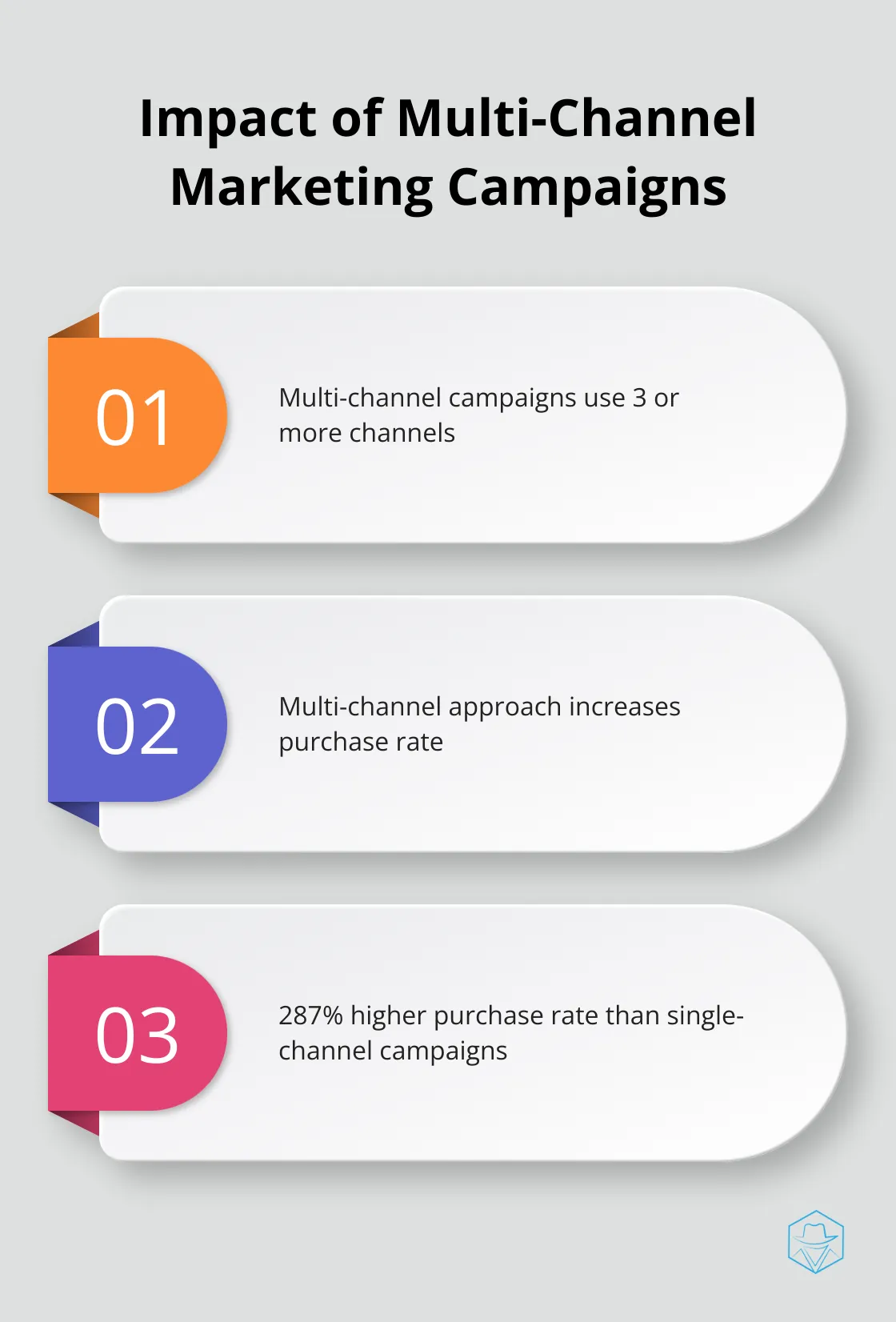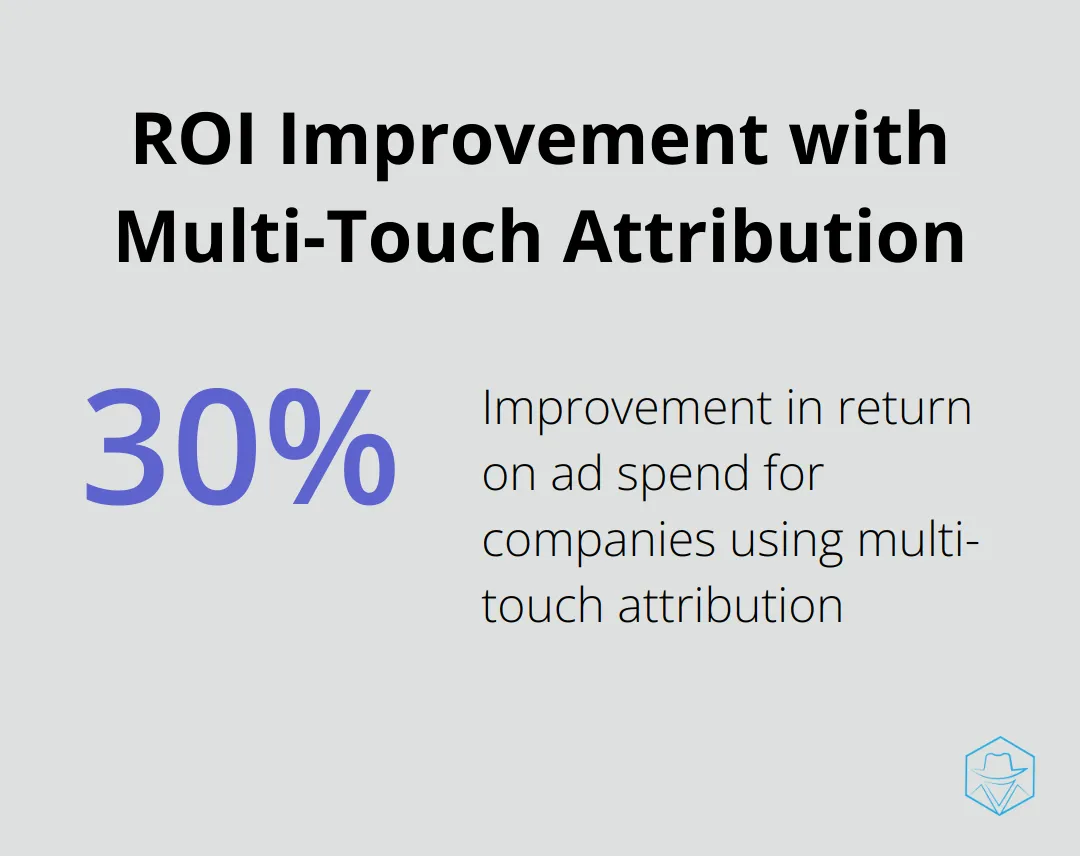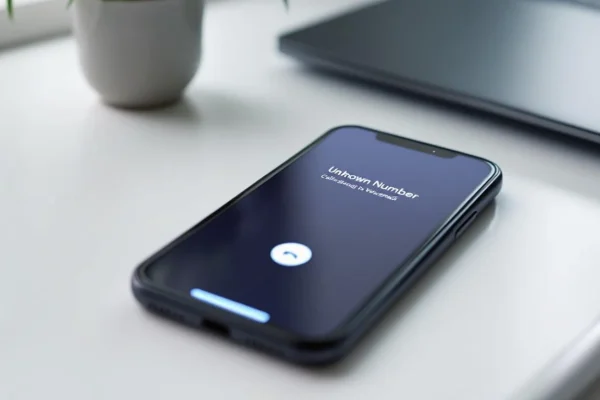Multi-Channel Marketing Automation: Best Practices

Multi-channel marketing automation has become essential for businesses aiming to reach their audience effectively across various platforms. At Drop Cowboy, we’ve seen firsthand how this approach can significantly boost engagement and conversions.
In this post, we’ll explore best practices for implementing a successful multi-channel marketing automation strategy. From choosing the right channels to measuring performance, we’ll provide actionable insights to help you maximize your marketing efforts.
Which Channels Resonate With Your Audience?
Know Your Audience Inside Out
Selecting the right channels for your multi-channel marketing automation strategy is a cornerstone of success. The first step involves a thorough understanding of your target audience demographics. This goes beyond basic information like age, location, income, and occupation. You must examine their online behavior, preferred devices, and content consumption habits. For example, if your audience consists mainly of busy professionals, platforms like LinkedIn and email might prove more effective than TikTok or Instagram.
A study by the Content Marketing Institute revealed that B2B marketers use an average of six channels to distribute content. However, the focus should not be on quantity, but on quality-choosing channels that truly resonate with your audience.
Map the Customer Journey
An analysis of your customer journey and identification of key touchpoints is essential. This process helps you understand where and how your audience interacts with your brand. Tools like Google Analytics can provide valuable insights into how customers move through your sales funnel.
You might discover that potential customers often start their journey on social media, move to your website for more information, and then convert through email marketing. This knowledge allows you to tailor your automation strategy to guide prospects smoothly through each stage.
Maximize Impact with Complementary Channels
After identifying your audience’s preferred channels, consider how these platforms can work together synergistically. For instance, if you use ringless voicemail (a feature offered by platforms like Drop Cowboy), you might follow up with an SMS to reinforce your message and provide a quick action point for the recipient.
Research by Omnisend shows that marketing campaigns using three or more channels earned a 287% higher purchase rate than single-channel campaigns. This statistic underscores the importance of a well-integrated multi-channel approach.

Optimize Channel Selection
The key is not to spread yourself thin across every available platform. Instead, choose a mix of channels that complement each other and align with your audience’s preferences and behaviors. This approach will create a cohesive and effective multi-channel marketing automation strategy that drives engagement and conversions.
As you move forward with your channel selection, it’s important to consider how you’ll create consistent messaging across these platforms. Let’s explore this crucial aspect of multi-channel marketing automation in the next section.
How to Create Unified Cross-Channel Campaigns
Craft a Consistent Brand Voice
A unified brand voice across all channels forms the foundation of effective multi-channel marketing automation. This doesn’t require identical messages everywhere, but a recognizable tone and style should permeate all communications. For instance, a brand known for its friendly, conversational tone on social media should reflect this in email marketing and SMS campaigns as well.
A study by Lucidpress revealed that consistent brand presentation across all platforms can increase revenue by up to 23%. This statistic highlights the importance of maintaining a cohesive brand identity across marketing channels.

Tailor Content to Channel Strengths
While consistency matters, each channel’s unique strengths should be leveraged. Instagram excels at visual storytelling, LinkedIn suits in-depth industry insights, and SMS works best for short, time-sensitive messages. Ringless voicemail (a feature offered by platforms like Drop Cowboy) proves particularly effective for personalized, high-impact messages. When combined with follow-up SMS, it creates a powerful combination that can significantly boost engagement rates.
Implement Smart Personalization
Personalization has become a necessity in multi-channel marketing. Epsilon reports that 80% of consumers are more likely to make a purchase when brands offer personalized experiences.
The process starts with audience segmentation based on demographics, behavior, and preferences. This data then informs tailored messages across channels. For example, a personalized email based on a customer’s browsing history could be followed by a targeted SMS offer if no purchase occurs within a specific timeframe.
Advanced tools (such as Drop Cowboy’s Mimic AI™) take personalization further by allowing voice cloning for personalized voicemail messages. This level of customization can dramatically increase engagement and conversion rates.
Synchronize Messaging Across Platforms
Synchronization of messaging across different platforms creates a seamless customer experience. This doesn’t mean identical content everywhere, but rather a cohesive narrative that guides customers through their journey with your brand. For instance, a social media post could introduce a new product, an email could provide more detailed information, and an SMS could offer a limited-time discount.
Utilize Cross-Channel Retargeting
Cross-channel retargeting allows brands to reach customers who have shown interest but haven’t converted. For example, a customer who abandons a cart on your website could receive a personalized email reminder, followed by a targeted social media ad if they don’t respond. This multi-pronged approach increases the chances of conversion and demonstrates the power of integrated, cross-channel campaigns.
The creation of unified cross-channel campaigns marks a significant step in your multi-channel marketing automation strategy. However, the work doesn’t stop here. The next critical phase involves measuring and optimizing the performance of these data-driven campaigns across various channels.
How to Measure Multi-Channel Performance
Set Up Cross-Channel Tracking
The first step in measuring multi-channel performance involves the setup of robust tracking systems. Google Analytics stands out as a powerful tool for this purpose, allowing you to track user interactions across various channels. However, it’s not the only option. Tools like Mixpanel or Amplitude can provide more granular insights into user behavior.
You should use UTM parameters to track the source of your traffic across different channels. This allows you to see which channels drive the most engagement and conversions. If you use ringless voicemail features (like those offered by Drop Cowboy), you can track call-backs and conversions directly through the platform, integrating this data with your overall analytics.
Implement Multi-Touch Attribution
Single-touch attribution models don’t fit in today’s complex customer journeys. You should implement a multi-touch attribution model to understand how different channels contribute to conversions. A Marketing Evolution study found that companies using multi-touch attribution saw a 30% improvement in their return on ad spend.

Several multi-touch attribution models exist, such as linear, time decay, or data-driven. Each has its strengths, so you should choose the one that best fits your business model and customer journey.
Analyze Campaign Data for Actionable Insights
After you set up your tracking, you need to analyze the data. Look for patterns in customer behavior across channels. Which channels drive initial awareness? Which ones convert most effectively? Do any unexpected synergies exist between channels?
For instance, you might find that customers who receive an SMS after a ringless voicemail are 50% more likely to convert. This insight could inform future campaign strategies, prompting you to always follow up voicemails with text messages.
Pay attention to engagement metrics like open rates, click-through rates, and conversion rates across different channels. The Email Marketing Benchmarks report by Mailchimp shows that the average email open rate across industries is 21.33%. If your emails consistently perform below this benchmark, you should reassess your email strategy.
Adjust Strategies Based on Performance Metrics
The final step involves using these insights to optimize your multi-channel strategy. This might involve reallocating budget to high-performing channels, adjusting the timing of your messages, or refining your audience segmentation.
For example, if you notice that your SMS campaigns have a significantly higher engagement rate than your email campaigns, you might decide to shift more of your messaging to SMS. Or if you find that certain segments of your audience respond better to voice messages, you could increase your use of ringless voicemail features (such as those provided by Drop Cowboy) for those segments.
Optimization should be an ongoing process. You should review your performance metrics regularly and make data-driven adjustments to your strategy. This agile approach will help ensure that your multi-channel marketing automation efforts continue to deliver strong results over time.
Final Thoughts
Multi-channel marketing automation empowers businesses to engage audiences across various platforms effectively. We select channels that resonate with our target audience, create cohesive campaigns, and continuously measure performance to enhance our marketing efforts. Understanding audience preferences, mapping customer journeys, and leveraging complementary channels maximize our impact in the digital landscape.
Advanced AI and machine learning will enable more sophisticated personalization and predictive analytics in the future. Voice-based marketing, including platforms like Drop Cowboy with its Mimic AI™ technology, will likely gain prominence. The integration of augmented reality (AR) and virtual reality (VR) into marketing automation strategies may also become more prevalent, providing immersive experiences across channels.
Multi-channel marketing automation will continue to evolve, focusing on seamless, omnichannel experiences that blur the lines between different marketing channels. Businesses that adapt to these changes and leverage new technologies will position themselves to thrive in this dynamic field. We encourage you to explore the possibilities of multi-channel marketing automation for your own business growth.
blog-dropcowboy-com
Related posts

April 17, 2025
Streamline Your Marketing Content with Automation
Streamline marketing content automation, boost productivity, and engage your audience effortlessly with cutting-edge tools and practical insights.

August 13, 2025
If a call goes straight to voicemail
Learn what it means if a call goes straight to voicemail. Discover reasons and tips on how Drop Cowboy’s tools might help manage your communications.

May 16, 2025
Best GoHighLevel Alternatives for Your Business
Explore top GoHighLevel alternatives to boost your business growth with the right tools and services tailored to your needs.

August 4, 2025
Why do calls go straight to voicemail
Discover why calls go straight to voicemail and explore solutions to improve connectivity. Learn practical tips to ensure your calls are received.

August 11, 2025
Ringless voicemail software
Explore how ringless voicemail software can streamline communication, boost efficiency, and keep your business ahead in customer engagement.

August 7, 2025
Buy Toll Free Numbers: A Guide for Businesses
Boost your business by using our guide to get toll free numbers. Learn benefits, setup tips, and enhance customer connections with ease.